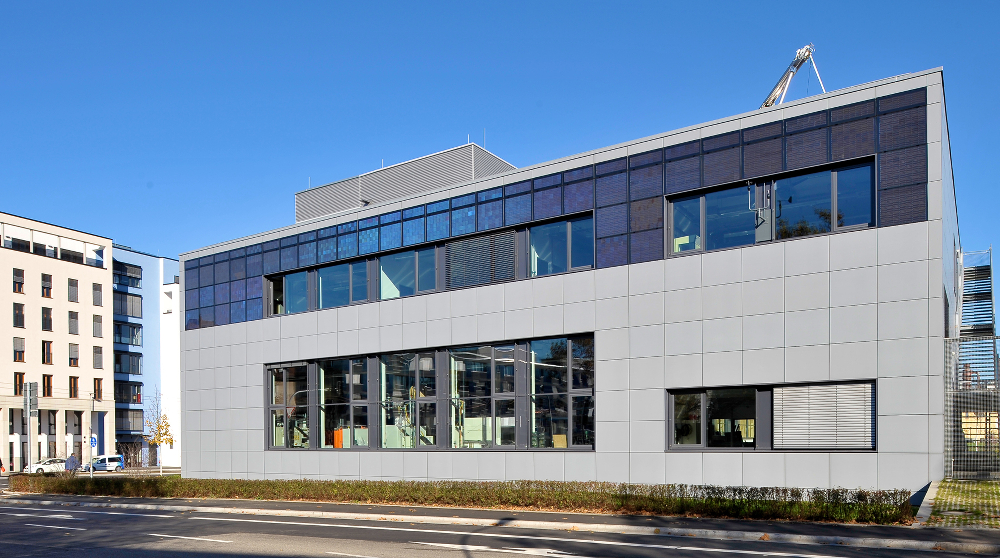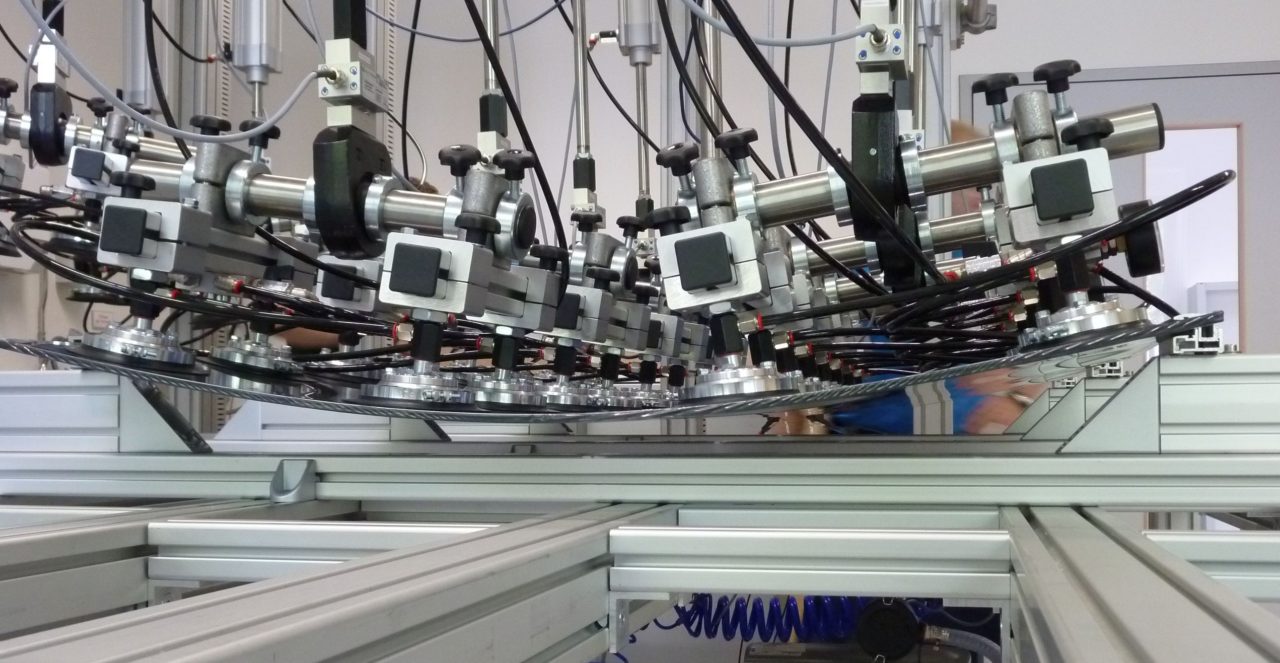
Germany’s Fraunhofer ISE has made a modest, 70 panel installation of new crystalline PV cell and module technologies produced by the institute on the outside of one of its laboratories.
The institute, which researches solar energy and related clean energy technologies including battery-based energy storage and hydrogen fuel cell vehicles, announced yesterday that it has completed the test project, which started back in 2013 when the lab was inaugurated. The institute claims the new cells and modules are lower cost than comparable technology, and said the installation shows that by the addition of the thermoplastic material TPS, they can be adapted for building facades.
Unlock unlimited access for 12 whole months of distinctive global analysis
Photovoltaics International is now included.
- Regular insight and analysis of the industry’s biggest developments
- In-depth interviews with the industry’s leading figures
- Unlimited digital access to the PV Tech Power journal catalogue
- Unlimited digital access to the Photovoltaics International journal catalogue
- Access to more than 1,000 technical papers
- Discounts on Solar Media’s portfolio of events, in-person and virtual
Or continue reading this article for free
Fraunhofer has dubbed the new module 'TPedge'. It integrates back-contacted cells made with the institute’s patented ‘High Performance Metal Wrap-through' concept. Group head of MWT solar cells and printing technology Dr Florian Clement said the use of automated production processes meant his team was able to produce the devices in cycle times similar to industrial fabrication.
MWT means that the cells are interconnected on the rear side, contacting the front side with metalised vias. The technique is designed to reduce losses from shading on the front, and reduce ohmic losses by improving cell interconnection. According to Fraunhofer ISE, cells made with the high performance variant of MWT can reach conversion efficiencies of 20.5%.
Fraunhofer also used patented technology to wire cells into TPedge modules, a cell connector made of copper, developed with soldering system company Somont, which is part of technology supply group Meyer Burger.
Using a Somont back-contact stringer unit to put it in place, the copper connector’s structured metal foil reduces stringing losses to around 1% while minimising mechanical stress on cells, Fraunhofer claimed.
Lamination-free production
Another big innovation, the institute said, was that the modules are fixed into a glass-glass module, sealed with thermoplastic TPS, rather than being laminated, which could save on production costs. This encapsulation method was developed with specialist glass supplier Bystronic Glass and again is patented.
In total, Fraunhofer’s production run of TPedge this time around was limited to about 100 modules, with a representative sample approved for the IEC standard 61215. The project has been supported by Germany’s Federal Ministry for Economic Affairs and Energy.
Fraunhofer said it worked closely with the architecture industry to develop modules that can be integrated into the construction of building facades. The installation will be assessed and analysed “continuously”, and is expected to help Fraunhofer’s scientists get better knowledge of aspects of developing the various technologies, including how partial shading can affect the yield of BIPV installations.

